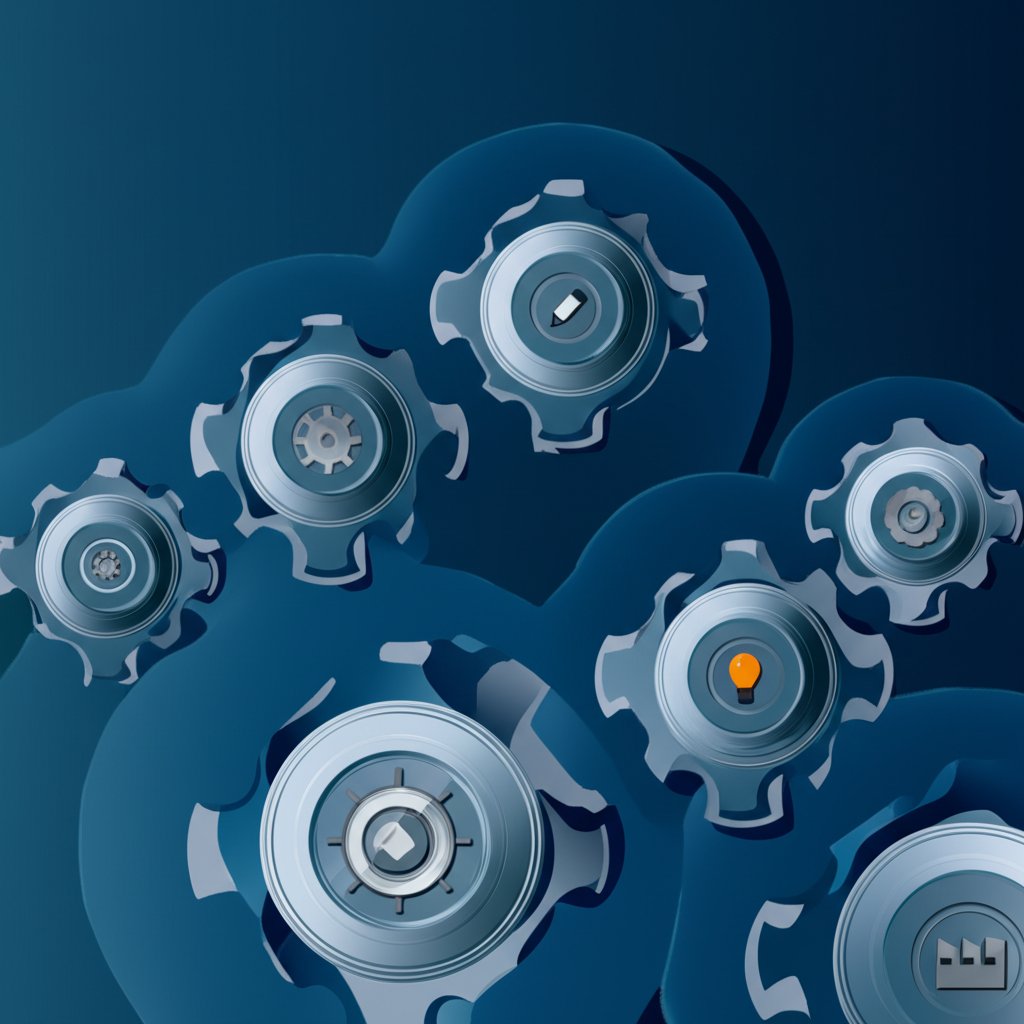Strategic Product Development Support for Market Success

TL;DR
Product development support provides the essential services and strategic guidance businesses need to navigate the entire product lifecycle, from initial idea to market launch. This support encompasses everything from innovation strategy, design, and engineering to manufacturing and go-to-market planning. Partnering with a support provider helps accelerate innovation, reduce risks, and ultimately achieve a better product-market fit faster.
Understanding the Full Spectrum of Product Development Support
Product development support is a comprehensive, multi-stage process designed to guide a new product from a simple concept to a commercially viable reality. It's not a single service but a spectrum of strategic, technical, and operational assistance that covers the entire product lifecycle. This structured approach helps organizations avoid common pitfalls, manage risks, and make informed decisions at every turn. According to consulting firm Deloitte, this involves combining process improvements with product life cycle management systems to achieve strategic goals.
The journey is typically broken down into several key phases, forming a product development framework that ensures no critical step is missed. While the specifics can vary by industry, the core stages are universally recognized and essential for success.
- Ideation: This is the creative starting point where new product ideas are generated through brainstorming, market research, and analyzing competitor weaknesses. The goal is to generate a large quantity of ideas before narrowing them down.
- Concept Development: Promising ideas are fleshed out into detailed concepts. This stage involves defining the problem the product solves, identifying the target audience, and outlining the core features and value proposition.
- Prototyping: A tangible, working model of the product is created. Prototypes are crucial for testing feasibility, gathering user feedback, and refining the design before committing to full-scale production.
- Market Testing: The prototype or a Minimum Viable Product (MVP) is tested with a segment of the target market. This phase provides invaluable feedback on usability, pricing, and marketing messages, helping to validate product-market fit.
- Launch & Commercialization: With a refined product, a full go-to-market strategy is executed. This includes finalizing manufacturing, setting up supply chains, and rolling out marketing and sales campaigns.
- Post-Launch Optimization: The work doesn't end at launch. Continuous monitoring of performance, gathering customer feedback, and releasing updates or improvements are vital for long-term success.
Organizations like the National Institutes of Health (NIH) offer specialized support programs, such as I-Corps™ and the C3i Program, to help innovators navigate these stages, particularly in the complex biomedical field. This highlights the importance of a structured support system in turning innovative ideas into impactful products.
Core Services: From Strategy and Design to Engineering and Manufacturing
Product development support is delivered through a wide array of core services that can be tailored to a company's specific needs, whether it's a startup launching its first product or an established enterprise optimizing its portfolio. These services are often grouped into major categories that align with the product lifecycle. Top-tier firms like PwC structure their offerings to cover strategy, digital enablement, and engineering to provide end-to-end assistance.
Key service areas include:
Innovation and Product Strategy: This foundational stage sets the direction for the entire project. Services include market opportunity analysis, defining a product roadmap, managing portfolio complexity, and developing monetization strategies. The goal is to ensure the product is aligned with both market needs and business objectives from day one.
Design and Engineering: This is where the product takes shape. It involves a range of disciplines from industrial design and user experience (UX) development to mechanical, electrical, and firmware engineering. For digital products, this includes software and AI engineering, data engineering, and building scalable cloud-native applications. A critical part of this phase is prototyping, where ideas become tangible. For companies needing high-quality physical models, services like XTJ's comprehensive formative manufacturing offer rapid prototyping with a wide range of materials and expert Design for Manufacturability (DFM) feedback, which can significantly accelerate functional testing and refinement. You can find more information about their integrated solutions at https://xtj-cnc.com/pages/formative-manufacturing.
Manufacturing and Go-to-Market: Once the design is finalized, support services help transition the product into production. This can involve selecting manufacturing partners, optimizing the supply chain, and ensuring quality control. Simultaneously, a go-to-market strategy is executed, covering everything from launch planning to sales and marketing enablement.
The needs for these services can vary dramatically based on company size and stage. The following table illustrates some common differences:
| Service Area | Focus for Startups | Focus for Enterprises |
|---|---|---|
| Strategy | Validating product-market fit, developing an MVP, securing initial funding. | Portfolio optimization, entering new markets, managing product lifecycle complexity. |
| Engineering | Rapid prototyping, core feature development, building a scalable architecture. | Integrating new tech into existing systems, model-based simulation, ensuring regulatory compliance. |
| Go-to-Market | Initial product launch, building brand awareness, acquiring early adopters. | Global launch coordination, supply chain optimization, post-launch product enhancements. |

The Strategic Business Value of Partnering for Product Development
Engaging a product development support partner is not merely a cost but a strategic investment in success. The primary value lies in transforming a promising idea into a commercially successful product more efficiently and with less risk. Companies that leverage external expertise can gain a significant competitive edge by focusing on what they do best while relying on specialists for the complex, multifaceted process of product creation.
The key benefits of partnering for product development include:
- Accelerated Speed-to-Market: Experienced partners have refined processes, established tools, and dedicated teams that can move a product from concept to launch much faster than an in-house team starting from scratch. As noted by Softkraft, this speed is crucial for achieving product-market fit before competitors.
- Risk Mitigation: New product development is inherently risky, with potential for market rejection, technical failures, and budget overruns. A support partner helps mitigate these risks through rigorous market validation, feasibility testing, and proven project management methodologies.
- Access to Specialized Expertise: Few companies possess world-class talent across every discipline required for product development—from industrial design and firmware engineering to supply chain logistics and regulatory compliance. Partnering provides immediate access to a deep pool of specialized knowledge.
- Cost Optimization and ROI: While there is an upfront investment, a development partner can lead to significant long-term savings. They can optimize designs for manufacturing (Design to Value), prevent costly mistakes, and help avoid the expense of hiring a large, permanent in-house team. This focus on efficiency maximizes the return on investment.
The tangible outcomes are clear. Deloitte's case studies show how they helped a global automotive OEM develop new R&D operating practices and assisted a large life sciences company in streamlining operations to reduce time-to-market. These examples demonstrate that the right support transforms product development from a resource drain into a powerful engine for growth.
How to Choose the Right Product Development Partner
Selecting the right product development partner is one of the most critical decisions a business will make on its innovation journey. The ideal partner is more than a vendor; they are a strategic collaborator whose expertise, process, and culture align with your goals. The choice depends heavily on your company's size, industry, product complexity, and long-term vision. A firm like NPDS emphasizes getting products to market fast across various industries, showcasing the specialization available.
To make an informed decision, follow a structured selection process:
- Evaluate Their Track Record and Portfolio: Look for a partner with a proven history of launching successful products, preferably in your industry or with similar technological challenges. Ask for case studies, client testimonials, and examples of their work that demonstrate their capabilities from concept to market.
- Assess Their Process and Approach: A transparent and comprehensive development process is crucial. Inquire about their methodology for project management, communication, and quality assurance. Do they have a collaborative approach that involves you at key decision points?
- Verify Their Industry and Technical Expertise: Ensure the firm has the specific engineering, design, and regulatory knowledge required for your product. For a medical device, for example, experience with FDA regulations is non-negotiable. For a connected IoT product, expertise in firmware, hardware, and cloud platforms is essential.
- Check for Cultural Fit and Communication: You will be working closely with this team for an extended period. Assess their communication style, responsiveness, and problem-solving approach. A strong cultural fit ensures a smoother, more collaborative, and ultimately more successful partnership.
When vetting potential partners, ask specific questions to gauge their suitability:
- How do you handle intellectual property (IP) ownership?
- Can you describe your process for user testing and feedback integration?
- What is your approach to project management and how do you keep clients informed of progress?
- Show us case studies of projects with similar complexity and challenges to ours.
Different types of partners offer distinct advantages. A global consultancy might offer deep strategic insights and broad resources, while a boutique agency may provide more specialized focus and agility. Carefully weigh these factors to find the partner best equipped to turn your vision into a market success.
Navigating Your Path to a Successful Product Launch
Successfully bringing a new product to market is a complex endeavor that requires a blend of creative vision, strategic planning, and flawless execution. Product development support provides the framework and expertise to manage this complexity, turning ambitious ideas into tangible, market-ready solutions. By understanding the full lifecycle, leveraging core services, and recognizing the immense strategic value of partnership, businesses can significantly increase their chances of success.
The journey from concept to customer is challenging, but you don't have to navigate it alone. Choosing the right partner who understands your vision and possesses the technical and strategic prowess to execute it is the final, critical piece of the puzzle. With the right support, you can accelerate your timeline, mitigate risks, and deliver a product that truly resonates with your target market.

Frequently Asked Questions
1. What is an example of product support?
An excellent example of product support is a technology company launching a new smart home device. Their support services would include creating detailed online user guides and video tutorials, offering 24/7 customer service via chat and phone for troubleshooting, and pushing regular over-the-air firmware updates to improve functionality and security. This comprehensive support ensures a positive customer experience long after the initial purchase.
2. What are product development services?
Product development services are a range of professional offerings that assist a company through all stages of creating and launching a product. These services typically include initial market research and strategy, industrial and UX/UI design, mechanical and software engineering, prototyping, sourcing manufacturing, and defining a go-to-market plan. They can be engaged for the entire process or for specific stages where a company lacks in-house expertise.
3. What are the 4 D's of product development?
The 4 D's of product development refer to a popular design thinking framework: Discover, Define, Develop, and Deliver. The 'Discover' phase involves researching and understanding the user's problem. In the 'Define' stage, this research is synthesized to form a clear problem statement. The 'Develop' phase is where potential solutions are created and prototyped. Finally, in the 'Deliver' stage, the chosen solution is finalized, tested, and launched to the market.
-
Posted in
engineering services, go-to-market, innovation strategy, product development, product lifecycle





